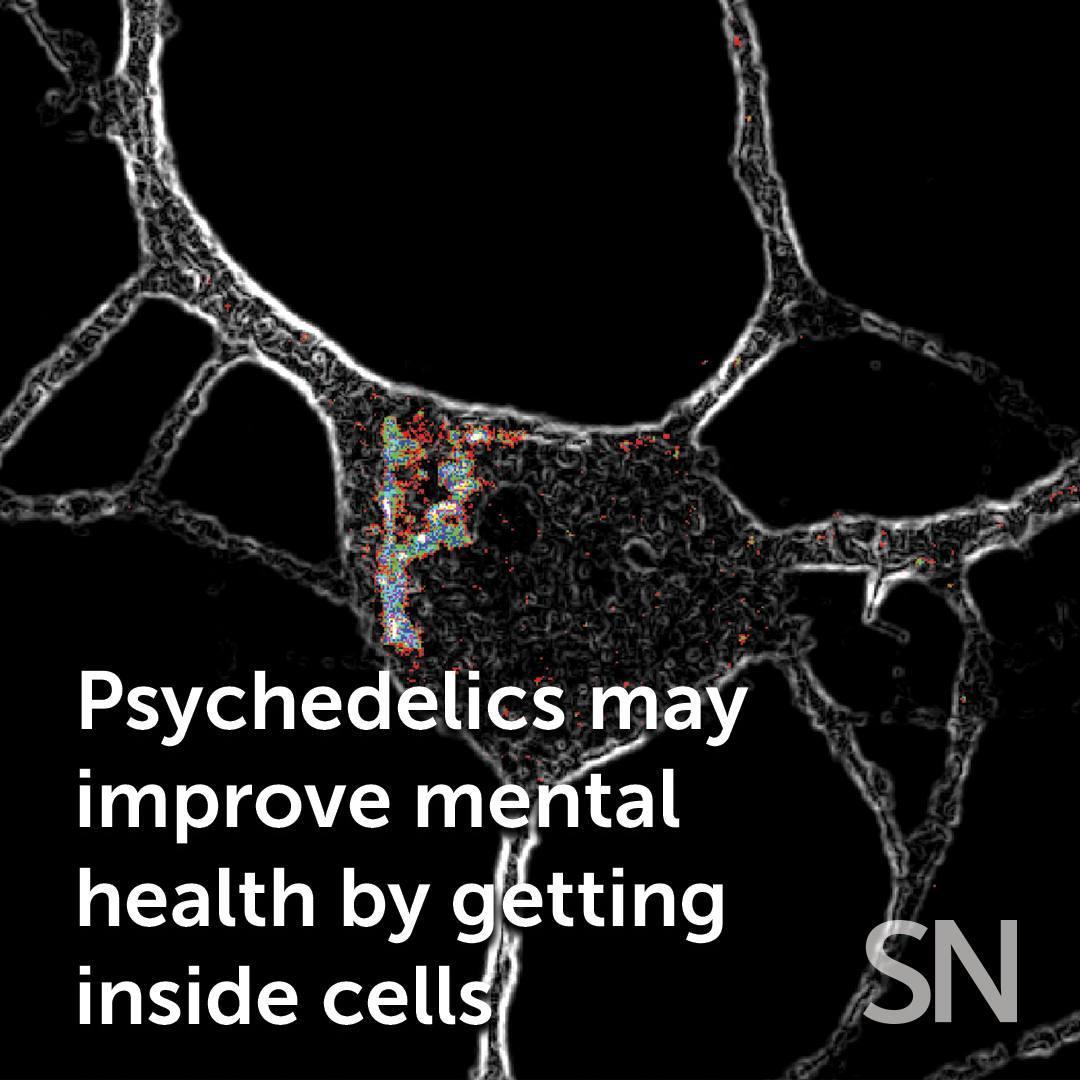Psychedelics go beneath the cell surface to unleash their potentially therapeutic effects. These drugs are showing promise in clinical trials as treatments for mental health disorders. Now, scientists might know why. The substances can get inside nerve cells in the cortex — the brain region important for consciousness — and tell the neurons to grow, researchers report. It was already known that substances like psilocin, which comes from magic mushrooms, and LSD repair neurons by promoting the growth of nerve cell branches that receive information, called dendrites. But how they trigger cell growth was a mystery. The new research shows that access to a protein called the 5-HT2A receptor (highlighted with colors in this microscopic image) inside the cells may be the key to achieve therapeutic effects.
(: David Olson/UC Davis)
#science #neuron #nervecell #brain #neuroscience #psychedelic #lsd #magicmushroom #cortex #cell #microscopic world
(: David Olson/UC Davis)
#science #neuron #nervecell #brain #neuroscience #psychedelic #lsd #magicmushroom #cortex #cell #microscopic world
Psychedelics go beneath the cell surface to unleash their potentially therapeutic effects. These drugs are showing promise in clinical trials as treatments for mental health disorders. Now, scientists might know why. The substances can get inside nerve cells in the cortex — the brain region important for consciousness — and tell the neurons to grow, researchers report. It was already known that substances like psilocin, which comes from magic mushrooms, and LSD repair neurons by promoting the growth of nerve cell branches that receive information, called dendrites. But how they trigger cell growth was a mystery. The new research shows that access to a protein called the 5-HT2A receptor (highlighted with colors in this microscopic image) inside the cells may be the key to achieve therapeutic effects.
(📸: David Olson/UC Davis)
#science #neuron #nervecell #brain #neuroscience #psychedelic #lsd #magicmushroom #cortex #cell #microscopic world
·1051 Views
